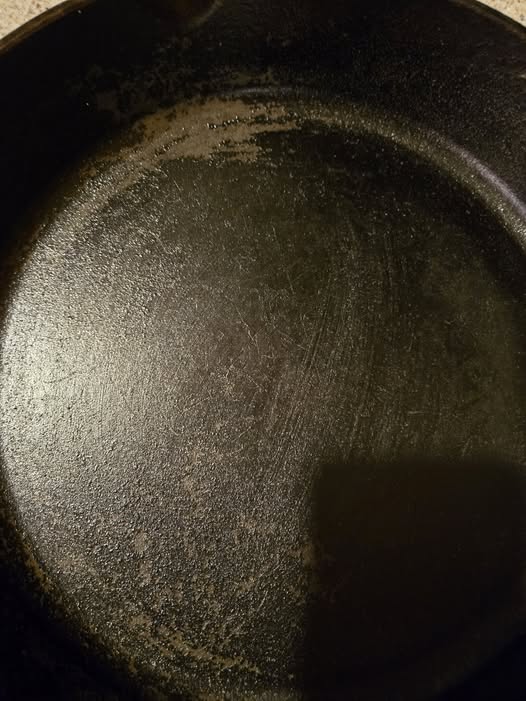Introduction
Seasoning a cast iron pan is one of the simplest yet most transformative rituals in the kitchen. With just a thin layer of oil and a bit of heat, you can turn a dull, rusty skillet into a slick, naturally nonstick workhorse that lasts generations. The process may sound technical, but once you understand the basics, it becomes second nature—easy, rewarding, and essential for great cooking.
Origin and Cultural Significance
Cast iron cookware traces back hundreds of years, cherished across continents for its longevity, versatility, and resilience. From American frontier kitchens to Asian woks and African cooking traditions, cast iron has played a central role in everyday meals. Seasoning the pan became a tradition not only to improve cooking performance but also to honor the idea of taking care of tools that feed the family. A well-seasoned skillet is often passed down through generations, carrying flavor, stories, and heritage.
Ingredients Quantity
To season one standard cast iron pan, you’ll need:
- 1–2 teaspoons neutral, high-smoke-point oil, such as:
- Flaxseed oil
- Grapeseed oil
- Canola oil
- Vegetable oil
- Avocado oil
- Paper towels or a lint-free cloth
- Optional: Mild dish soap (only for the initial cleaning step)
Optional Additions
- A baking sheet lined with foil to catch drips
- Kosher salt for scrubbing if the pan is rusty
- Stovetop finishing for an extra layer of quick seasoning after oven seasoning
- Beeswax blend (seasoning sticks) for deeper conditioning
Tips for Success
- Use very little oil. A thin, almost invisible layer prevents sticky residue.
- Heat is your friend. Higher heat helps polymerize the oil and build a strong coating.
- Multiple thin layers beat one thick one. They bond better and last longer.
- Always dry the pan fully after washing. Even a little moisture can cause rust.
- Re-season lightly after acidic dishes. Tomatoes or vinegar may strip the coating.
- Don’t fear the smoke. It’s normal as the oil bonds to the iron.
- Be consistent. Regular use and light oiling improve the seasoning over time.
Instructions
- Clean the Pan:
If the pan is new or rusty, wash it with mild soap and warm water. Dry completely. - Preheat Oven:
Set your oven to 230–245°C (450–475°F). - Apply Oil:
Add 1–2 teaspoons of oil to the pan. Rub it around with a cloth, coating the interior, exterior, and handle. - Wipe Excess:
Remove as much oil as possible. The pan should look dry, not shiny. - Bake:
Place the pan upside down on the oven rack with a tray underneath to catch drips. Bake for 1 hour. - Cool in Oven:
Turn off the heat and let the pan cool inside the oven for about 1 hour more. - Repeat (Optional):
For a stronger seasoning layer, repeat the oiling and baking process 2–3 times. - Maintenance:
After each cooking session, wipe the pan clean, dry it thoroughly, and lightly oil it while warm.
Description
A perfectly seasoned cast iron pan boasts a smooth, matte, charcoal-black surface that feels silky to the touch. The light oil layers create a natural nonstick finish without chemicals, allowing food to release effortlessly. Over time, the pan develops a characteristic sheen that reflects years of care and use. Each layer enhances performance, making your skillet increasingly durable, flavorful, and reliable.
Nutritional Information
Seasoning itself adds negligible calories, as the oil is polymerized into the surface, not consumed. Benefits include:
- No synthetic coatings
- Reduced need for excess fat when cooking
- Safe at very high temperatures
Any nutritional contributions are minimal and incidental.
Conclusion
Seasoning a cast iron pan is simpler than most people expect—just oil, heat, and patience. Whether your skillet is brand new or has seen better days, a few rounds of seasoning can completely revive it. With consistent care, your cast iron pan becomes smoother, stronger, and more dependable with every use.
Recommendation
Use your newly seasoned skillet often. Fry eggs, sear meats, sauté vegetables, bake cornbread—every dish helps reinforce the seasoning. Avoid long soaks in water, and dry thoroughly after each wash. The more you cook, the better the skillet becomes.
Embracing Healthful Indulgence
Seasoning your cast iron pan is an act of nourishment that benefits both your cooking and your lifestyle. By choosing a naturally nonstick, chemical-free surface, you reduce the need for heavy oils and avoid synthetic coatings. At the same time, you enhance flavor, elevate everyday meals, and embrace a slow, intentional approach to kitchen wellness. Healthy indulgence begins not only with the ingredients you cook—but with the tools you care for.
